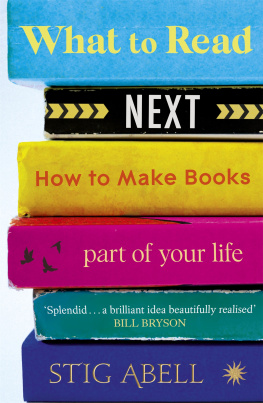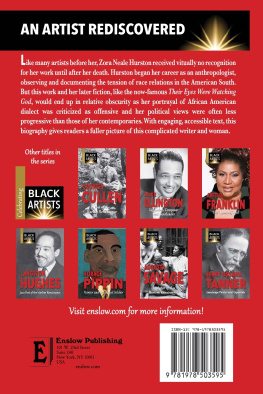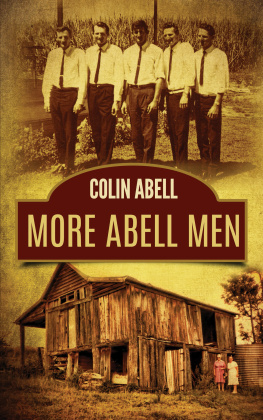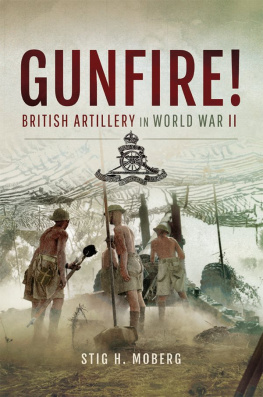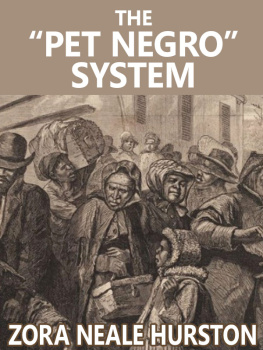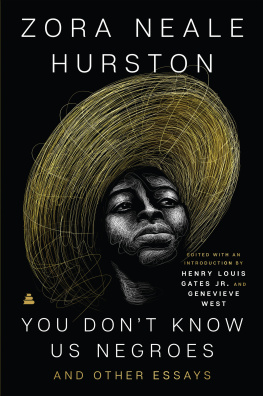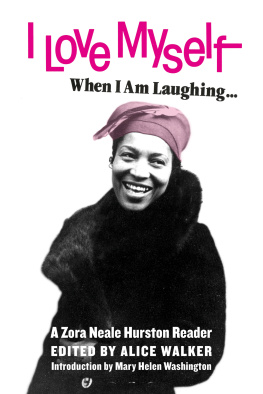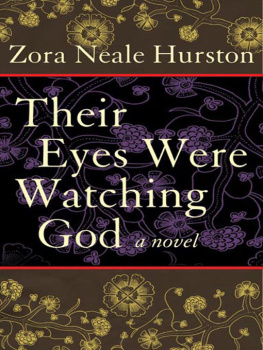Stig Abell is the breakfast presenter on Times Radio, a station he helped to launch, and a columnist for the Sunday Times . Before that he has been the editor and publisher of the Times Literary Supplement , a presenter on Radio 4s Front Row and had a weekly radio programme on LBC. His first book, How Britain Really Works , was published in 2018. His favourite book is American Tabloid by James Ellroy, and he cant stand audiobook snobs.
Praise for What to Read Next
Unusual and engaging... the whole book is a lucky dip: put in your thumb, pull out a plum, and relish it Allan Massie, Scotsman
A thoroughly enjoyable saunter through some great, and not so great, works of literature TLS
Beyond splendid... a brilliant idea, beautifully realised Bill Bryson
A witty, warm and wonderfully wise celebration of the written word. A huge treat Lucy Foley
Acknowledgements
The idea for this book began in a conversation I had with Cathryn Summerhayes well before she became my agent (and subsequently the consensus greatest agent in publishing). I wanted to write about difficult books to help people find a way into them. As it turns out, I bravely broadened my horizons to write about easy books as well. I am endlessly grateful to Cathryn, even if she does spend most of her time telling me how well all her other clients are doing.
Mark Richards was the man who brought me to John Murray and convinced me to write books in the first place. It has been a pleasure doing this one for him. His colleagues Luke Brown and Morag Lyall have improved the text immeasurably and stopped me from writing only in the medium of footnotes.
I did have proper jobs while writing this book, two of which helped me enormously. Editing the TLS put me in contact every day with the cleverest writers in the world on the subject of reading, and their thoughts were always my guides. And presenting Front Row was the privilege of my broadcasting career: all of the producers were tireless and wise, and wonderful companions in discovering more about the arts every day. My thanks to Alice Feinstein for taking a chance on me.
Every writer needs readers; in my case, the following people helped with drafts of this book: Steve Kennedy, Roz Dineen, Ruth Scurr, Xand Van Tulleken, Jeanette Sanders, David Shriver and Robert Douglas-Fairhurst. Robert Potts made sure I covered poetry as properly as I could, and Toby Lichtig was a guru on fiction (even though he is totally wrong about The Unconsoled ).
Every time I write about books, it is a reflection of my childhood and a house filled with the pleasure of reading. I owe so much to my parents, who are both great readers, though it is unlikely my mum will put up with the swearing in this one. My own children are, I hope, following me as book lovers; and they always provide the joyful, shouty, demanding backdrop to everything I do.
This book is dedicated to my only friend and wife, Nadine, from whom it is always a wrench to depart each morning and to whom I am always delighted to return.
Also by Stig Abell
How Britain Really Works
April
American Classics
Moby Dick (1851) by Herman Melville
Their Eyes Were Watching God (1937) by Zora Neale Hurston
2 April
Today, we had to give up our dog, Biscuit. He had leaped, unprovoked, on baby Phoebe, who had been wriggling and squalling on the other end of the sofa. He had his mouth on her face, and while he did not bite down he snarled and left a scratch. This is not his first act of aggression against a child. As a puppy he bit a girl who had jumped on him from behind on a hot day at a park; and since then he snapped at children who came too close.
We thought we could manage the situation, and keep him and the baby apart, but we recognised at some level that it was a forlorn, unrewarding hope. We had no choice in the end. My parents knew, remotely, a couple in Lincolnshire in their sixties with a big house and land, desperate for a dog, and so they took him, leaving us bereft.
I was never a dog person, and was faintly baffled at other peoples disproportionate loyalty and love for an animal. Until I had one. There is something atavistic about sitting in silent communion with a dog, content to exist in each others company. There is something spirit-stirring about watching your dog run in aimless directions, following his instinct and his nose. It is a living, chastening contrast to the laboured complexities of modern life. Dogs are often idealised in literature White Fang, say, or Lassie but they do, I think, represent an ideal we should not ignore.
Byrons dog, Boatswain, died of rabies, nursed to the end by the poet, who carved this epitaph on his tomb: Near this spot / are deposited the Remains of one / who possessed Beauty without Vanity, / Strength without Insolence, / Courage without Ferocity, / and all the Virtues of Man without his Vices. That last line is a little bombastic, and perhaps overstates the point. Elizabeth Barrett Browning had a dog called Flush, about which oddly Virginia Woolf wrote a biography in 1933, saying, A dog somehow represents no, I cant think of the word the private side of life the play side. I feel the same: my dog was something and stood for something. And although he is alive, he is no longer in my life, and that makes me sad.
3 April
In February 1849 Herman Melville read Shakespeare for the first time, and recorded his own, typically fevered reaction:
Dolt and ass that I am I have lived more than 29 years, and until a few days ago, never made close acquaintance with the divine William. Ah, hes full of sermons-on-the-mount, and gentle, aye, almost as Jesus. I take such men to be inspired. I fancy that this moment Shakespeare in heaven ranks with Gabriel, Raphael and Michael. And if another Messiah ever comes twill be in Shakespeares person.
When Melville encountered Shakespeare he saw God. And we can see the impact of his Damascene conversion on his prose, in Moby Dick , the novel he published just a couple of years later. Shakespeares influence was not unequivocally a helpful one. Melvilles masterpiece certainly borrowed some ambition and sense of metaphysical drama, some of its heft, from Shakespeare, but that may have unbalanced the novel more than a little.
As published, Moby Dick is a vast, crazed, encyclopaedic account of a captains obsession with a sperm whale of uncommon magnitude and malignity, who once bit off his leg; Ahab is a figure who combines the madness of Lear, the arrogance of Coriolanus and the misguided faith in fate of Macbeth.
It was a publishing failure. Reviewers were baffled by its eccentricity, with one verdict putting it a little less delicately than that: maniacal mad as a March hare mowing, gibbering, screaming, like an incurable Bedlamite, reckless of keeper or waistcoat. It did not sell out its first edition, and the remaining copies were accidentally destroyed in a warehouse fire. Melville went on to produce an even more disregarded novel, Pierre (1852), and ended his life in obscurity, working in a New York customs house, a failed novelist and poet, a drunk and probably a wife-beater. Though I wrote the Gospels in this century, he once said to his fellow novelist Nathaniel Hawthorne, I should die in the gutter.
Before Moby Dick , Melville had experienced some literary success with his highly spiced tales based on his own experience, artfully exaggerated of seafaring adventures in Polynesia: the novel Typee (1846) and its sequel Omoo (1847). In fact, when he got married in 1847 he was too famous to do so in church, for fear of crowds coming along to disturb the spectacle. He recognised that he would be for ever known as the man who lived among the cannibals, but for several decades afterwards was denied even that notoriety. The New York Times called him Hiram Melville in an article a week after his death.
Next page
